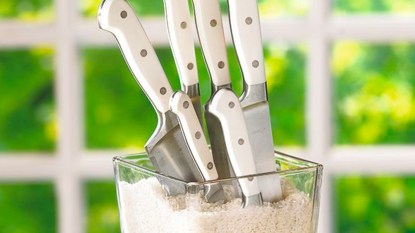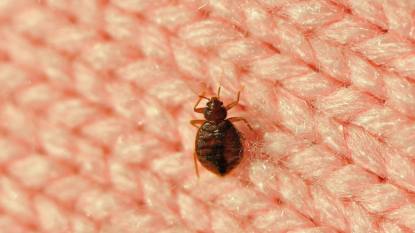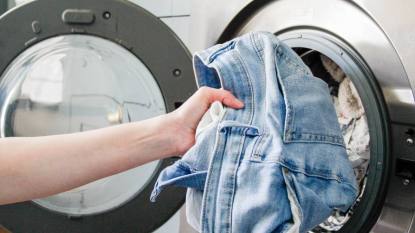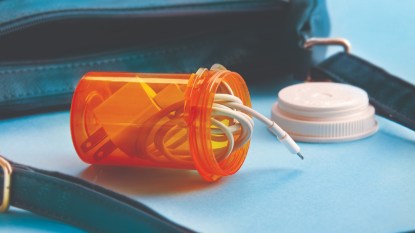How to Deep Clean A Mattress — The Genius DIY Spray That Freshens and Cleans Fast
Plus, experts give specific tips right for every type of mattress — using pantry items you already have!
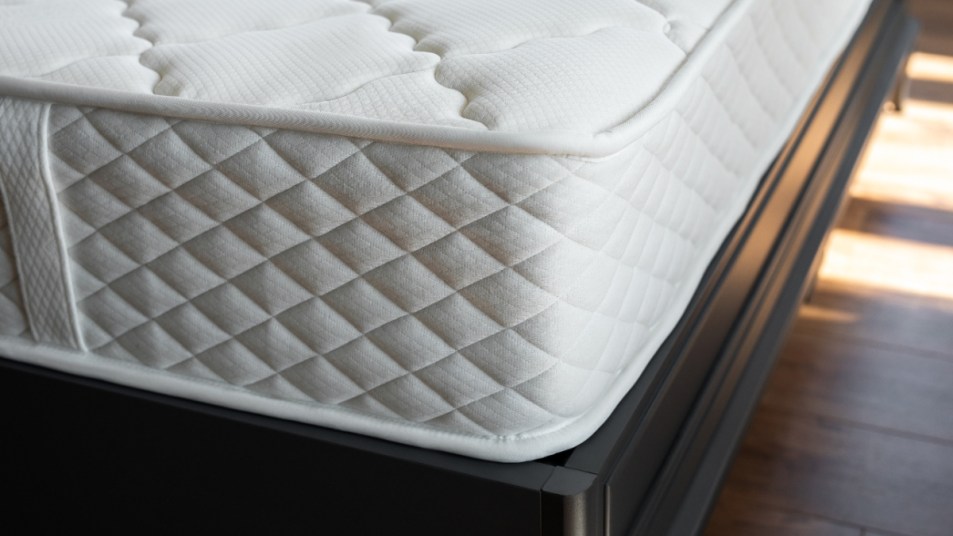
After a long day, your treasure the moment that you tumble into your bed and nestle into your covers for a night’s sleep. But it can be tough to enjoy your slumber when you feel like your mattress is less-than-fresh. Thankfully, making your mattress look and smell like new is really quite simple . . . if you know a few secrets. Below, experts advise on how to deep clean a mattress, so you can eliminate odors, tackle stains, and vacuum up grime.
How to freshen a mattress
It’s no secret that a mattress can hold onto odors over time. Even if you don’t have time for a deep cleaning, you can still freshen your mattress so it smells clean. Baking soda is the perfect household staple for deodorizing (just sprinkle it onto your mattress and vacuum up after 20 minutes), but there are other ways to nix the odors too.
James King, operations manager at DeluxeMaid, recommends grating some citrus zest (like lemon or orange), then adding it to the mattress top. Let air dry before vacuuming up the zest. “It leaves a subtle, refreshing scent,” he shares. (Click through more ways to use citrus peels.)
Another trick: Using cotton balls with fragrance. “Just soak them in your favorite perfume or essential oil and hide between you mattress and your box spring,” King adds.
You can also create an essential oil spray with oils such as lavender, peppermint and eucalyptus oil which can both freshen and deodorize the mattresses. “Mix a few drops of essential oil with water in a spray bottle,” says Bridget Chapman, senior editor at Sleepopolis, a mattress review website. “Spray the solution on the surface of the mattress and let it air dry completely.” Click through for a DIY lavender sleep spray recipe to help you fall asleep faster and stay asleep longer. Want to reverse brain aging while you sleep? Click through to learn which essential oils help with focus and brain health.
How to remove stains
Another common problem that pops up with mattresses is unwanted stains. Experts agree that knowing how to deep clean a mattress comes down to the type of mattress you own. “Different materials require specific care to maintain their integrity and comfort,” says King.
Tackle any unidentified stains based on the mattress material below.
1. Removing stains from an innerspring mattress
“Innerspring mattresses, with their resilient structure, handle liquids better but still require prompt blotting,” says King.
For stains on this type of mattress, opt for a diluted dish detergent. Darla DeMorrow, author of Organizing Your Home with SORT and SUCCEED, recommends the following DIY spray: Combine a quarter cup hydrogen peroxide, one cup of water, and 10 drops of lavender essential oil in a spray bottle, then add two squirts of liquid dish-washing soap. (Peroxide lifts stain pigments, dish soap breaks down grime and lavender leaves behind a pleasant scent!)
Spray the product onto the stained area, and let it sit for at least five minutes, then blot with paper towels until all the liquid is gone. Use any cleaning products sparingly, as you don’t want to soak your mattress too much. (Note: It’s also always a good idea to test your chosen cleaning product on a small, inconspicuous area first.)
2. Removing stains from a latex mattress
“Latex mattresses have a natural defense against moisture and stains but still benefit from gentle treatment,” explains King. To eliminate stains, he recommends blotting up any remaining liquid. Then apply a mild detergent mix made of a few drops of dish soap in water. (Note: Be careful not to oversaturate and blot up the soapy water with paper towels once done).
3. Removing stains from a memory foam mattress
“Memory foam mattresses are sensitive, absorbing liquids quickly, so act swiftly,” explains King. He says you should gently blot liquid stains with a dry cloth, then apply a mild soapy solution to the stain sparingly to avoid excess moisture. (Click through for more tips on cleaning a memory foam mattress.)
4. Removing stains from a pillow-top mattress
Pillow-top mattresses have an extra layer of padding attached to the top of the mattress. You can use regular mattress stain-removal methods on a pillow-top mattress, but the thick padding of a pillow top allows liquids to soak in quickly. To minimize staining, act quickly to blot stains with a clean rag, then use the diluted dish detergent method above.
5. Removing stains from a hybrid mattress
“Hybrids are a mix of materials, so it’s wise to check specifics,” says King. “Start with blotting for liquid stains, and for precise guidance, consult the manufacturer or warranty guidelines.”
How to remove urine stains from a mattress
Urine stains can be challenging to remove, but Chris Brantner, a certified sleep science coach at SleepZoo.com, has the following tips for removing the stain (and smell).
First, act quickly! Urine stains and smells can set in fast, and the longer you wait, the harder you’ll have to work. Soak up as much of the urine from the mattress as possible with paper towels.
Next, use a powerful biological cleaning agent, such as distilled white vinegar, to get rid of urine. Mix one part white vinegar with one part warm water, and put this into an empty spray bottle. (Click here to find more white vinegar uses.)
Spray the stained areas with your mixture. Open a window or turn on a fan to help eliminate the strong vinegar smell, and leave the mixture on the mattress for at least five minutes. Use paper towels to soak up as much vinegar as possible, pressing the towels into the mattress to absorb more liquid.
Baking soda is your secret weapon for getting rid of the smell of urine because it acts as a neutralizing agent. Brantner recommends sprinkling a generous amount of baking soda on the mattress, focusing on the stained areas. “The baking soda will start to cake up as it soaks up moisture,” he says. “But it needs time to work, so let it sit on the mattress for two to four hours.”
After the baking soda has had plenty of time to soak in, vacuum your mattress. If moisture remains, repeat the baking soda and vacuuming steps. For very stubborn urine stains, leave the baking soda to set overnight. (Click through for more on getting the pee smell out of a couch.)
For more on using baking soda to clean a mattress, watch the video below:
The best way to vacuum a mattress
Dust mites, grime and more means it’s important to run a vacuum over your mattress on a regular basis. (Note: Pros say address any stains first!)
You’ll want to make sure you’re using the right attachment to ensure your vacuum is working efficiently. King says to go for an upholstery or soft brush attachment.
“For a pillowtop mattress, use the crevice tool to get into the folds and seams,” shares Chapman. “If you have a pet or are allergic to dust mites, consider using a UV light vacuum cleaner.”
Gently run the vacuum over the mattress surface to allow it to grab any dirt or pet hair, then focus on the seams and edges. “Remember to go over the mattress in both horizontal and vertical directions,” adds King. “If your mattress is flippable, give both sides some love.”
How to steam clean a mattress
One simple way to give your mattress a deep clean is to enlist the help of a steam cleaner. (Note: This should not be done on memory foam mattresses!)
“When you’re ready to steam, go easy on the heat and opt for the low to medium setting,” advises King. “High temperatures could damage your mattress or leave it too damp, potentially causing mold issues.”
Also, when you’re done using the machine, let your mattress air dry completely. Turning on a fan or opening windows can help increase air flow to speed up the process. “Your mattress needs to be bone dry before you make your bed,” he adds.
With your mattress free of stubborn stains, odors and dust, you’ll want to focus on prevention to keep it in great condition. To protect your mattress from future stains, Brantner recommends investing in a mattress cover — a durable, waterproof layer that goes between your mattress and your sheets.
How to address rips or tears in your mattress
Many innerspring mattresses contain fiberglass and, over time, that fiberglass can break down and leak out of the mattress covering. Any rips or tears makes that much more likely, and can result in eye, nose, throat and lung irritation. Click through for how to know if your mattress contains fiberglass — and what to do about it if it does.


